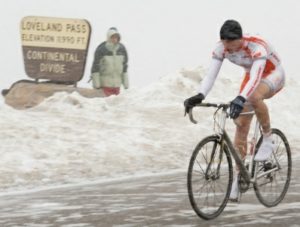Many cyclists think slapping mudguards on a carbon fiber bike is a little daft, but once you try them you will realize just how useful they can be. Unless it’s pouring rain, it’s the spray from the wheels that most often get you wet, so mudguards are your first line of defense. Not only do the best bike mudguards keep spray from flying into your face and going up your back, but they are also a common courtesy on group rides.
For commuters, fenders are a no brainer, but for cyclists heading out on training rides, they also have the advantage of keeping your feet and legs from getting soaked and chilled. That means you’ll be able to ride longer (also a no brainer).
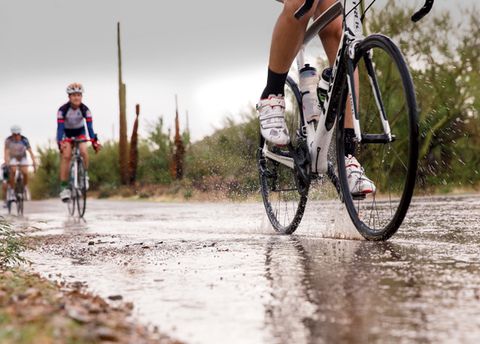
Types of Mudguards
Full Length
Full length, bolted mudguards are most commonly seen on touring bikes. These obviously provide the best coverage and protect the rider behind you, but they do have limited clearance and won’t fit all bikes. Some have a large rubber flap on the end of the front of the mudguard as well. The longer the front mudguard, the better chance that you feet will stay dry as they are in the firing line for water kicked up from the front wheel. For a bike to accommodate full length mudguards, you’ll want to make sure you have enough clearance under the brakes and behind the seat tube. You also want to make sure it has mudguard mounts.
Plastic Clip-On Guards
Plastic clip-on guards will attach to most road bikes. Clip-on guards are great for bikes without mudguard eyelets, but they typically provide less coverage.
Mountain Bike Style
Mountain bike style mudguards attach to the downtube and seatpost. These will fit on almost any bike, and provide a ton of clearance, but provide the least amount of coverage.
The Best Mudguards
Full Length: Portland Design Works Full Metal Fenders
Price: $118
Made of anodized aluminum and adorned with laser graphics and an embossed alloy head badge, the Full Metal Fenders look great. They provide full-wrap coverage, even shielding your shoes and riders on your rear wheel thanks to sturdy rubber mudflaps. Safety release tabs ensure your wheels keep turning even if debris gets lodged between the fender and tire. The mounting system has a creative workaround for forks that do not have a center mounting hole through the use of zip ties. They have two sizes: “The Road” and “The City” that cater to road or commuter bikes.
Full Length: SKS Chromoplastic
Price: $115
The SKS Chromoplastic are a great full length option that have stood the test of time. Made by sandwiching aluminum strips inside plastic housing, they are durable and provide great coverage. They feature stainless steel stays and hardware, with a front fork crown fitting and secu-clip to lock it in place. The Chromoplastic also include a mudflap on the front and a reflector on the rear. They’re available in a variety of sized to fit tires from 20 – 45mm.
Full Length: Velo Orange Hammered Alloy Fender
Price: $65
These fenders feature a classic hammered pattern and include a hardware kit to work with almost any type of mounting in the same finish as the fenders. Made from aluminum alloy for strength while staying lightweight, they come in a variety of sizes to ensure a good fit. They can be a pain to install, but they are built to last.
Clip On: SKS RaceBlade Pro XL
Price: $60
These easy to install clip on plastic mudguards are designed for 700c tires up to 32mm in width. They can adapt to the radius of the wheel by adjusting the length of the stays. Each mudguard consists of two parts that join together with steel brackets, held by the brake caliper bolt. They do a great job of keeping both your feet and your bottom dry, and protecting the rider behind you from getting sprayed in the face.
Mountain-Bike Style: Zefal Swan Road
Price: $15
If you don’t have mudguard mounts and are looking for some protection from road spray from your rear wheel, then the Zefal Swam Road is a great option. It includes a simple but sturdy bracket that attaches to the seatpost, making it super easy to take on and off.
Mountain-Bike Style: Crud Catcher
Price: $15
The Crud Catcher fits on your downtube to catch any loose mud being flicked up from your front wheel. Mostly used on mountain bikes, you can use it on your road bike as a means of keeping mud and spray out of your face. It’s easy to mount with the supplied fittings, and gets the job done with little fuss.
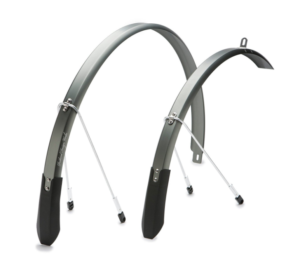

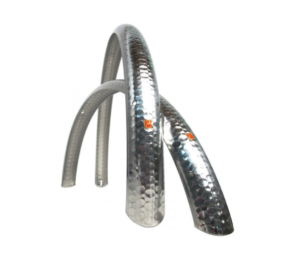
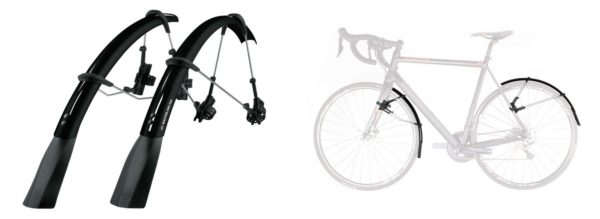
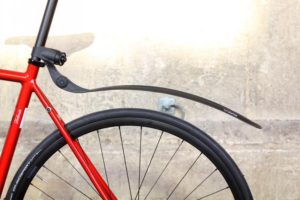

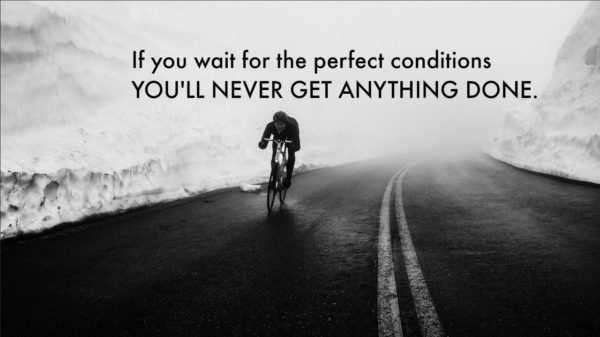

 Plan your route (and be realistic)
Plan your route (and be realistic)
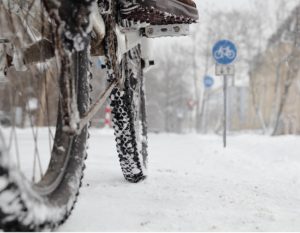
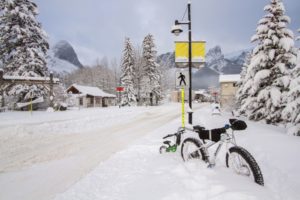 Fenders
Fenders